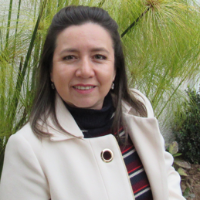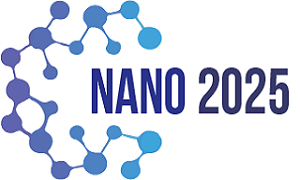2nd World Congress on
Nanotechnology
November 06-07, 2025 | London, UK
Address: Building A, Bath Road, Heathrow Boulevard, Sipson, West Drayton, UB7 0DU, United Kingdom
Nano 2025

Universidad de La Serena, Chile
Abstract:
The increasing demand for natural functional ingredients has driven the search for alternatives to stabilize bioactive compounds such as polyphenols present in Pisco grape pomace. These compounds exhibit instability under environmental factors (light, oxygen, pH), limiting their industrial application. Nanoencapsulation through biopolymer coacervates has emerged as an effective solution for protecting and stabilizing these bioactive compounds. This study aimed to develop a nanoencapsulation system using Pisco grape pomace extracts through coacervates of pectin (extracted from the same pomace) and chitosan, evaluating its potential for agroindustrial waste valorization. Different pectin: chitosan ratios were evaluated to form coacervates, determining Z-potential and particle size for each formulation. Pomace extracts were obtained through enzyme-assisted extraction and pressurized liquid extraction. Encapsulation efficiency was assessed using spectrophotometric techniques to assess the polyphenol content of pisco grape pomace. The optimal pectin: chitosan ratio of 3:2 showed the best physicochemical characteristics for stable coacervate formation. Under these conditions, pomace extracts obtained by both extraction methods were successfully incorporated, achieving encapsulation percentages of ~90%. Particle size analysis confirmed the formation of stable nanoparticles with suitable Z-potential values. An efficient nanoencapsulation system was developed that enables comprehensive valorization of Pisco grape pomace, utilizing both its polyphenols and endogenous pectin. The high encapsulation efficiency demonstrates this system's potential to protect bioactive compounds and its application in food, pharmaceutical, and cosmetic industries, contributing to the circular economy and environmental sustainability.
Biography:
Issis Quispe Fuentes is a leading scientist in food analytical chemistry, with expertise in recovering and characterizing biomolecules and valorizing food waste. She earned her Ph.D. at the University of La Serena and is a key researcher in the Food Engineering Department. With 39 scientific publications, she has supervised numerous undergraduate and graduate theses and actively participated in national and international conferences. She has led or collaborated on major projects such as FIC, CORFO, FONDECYT, and SATREPS ReBiS.
